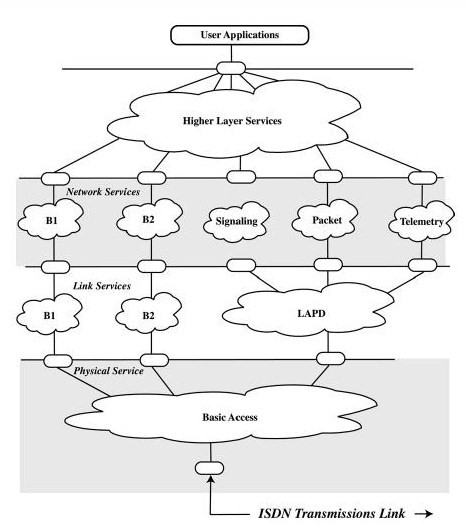Frame Relay
Frame Relay is a telecommunication service designed for cost-efficient data transmission for intermittent traffic between local area networks (LAN) and between end-points in a wide are network (WAN). Frame Relay puts data in a variable-size unit called a "frame" and leaves any necessary error correction up to the end-points, which speeds up overall data transmission. Fro most services, the network provides a permanent virtual circuit (PVC), which means that the costumer sees a continuous, dedicated connection without having to pay for a full-time leased line while the service provider figures out the route each frame travels to its destination and can charge based on usage.
Frame Relay complements and provides a mid-range service between ISDN, which offers bandwidth at 128kbps, and Asynchronous Transfer Mode (ATM), which operates in somewhat similar fashion to frame relay but at speeds from 155.520Mbps or 622.080Mbps.
Frame Relay is based on the older X.25 packet-switching technology which was designed for transmitting analog data such as voice conversations.Unlike X.25 which was designed for analog signals, frame relay is a fast packet technology, which means that the protocol does not attempt to correct errors. When an error is detected in a frame, it is simply dropped or thrown away.
Packet Switching
Packet switching is a store and forward switching technology for queuing networks where user
messages are broken down into smaller pieces called packets. Each packet has its own associated overhead containing the destination address and control information. Packets are sent from source to destination over shared facilities and use a statistical time−division multiplexing (TDM) concept to share the resources. Typical applications for packet switching include short bursts of data such as electronic funds transfers, credit card approvals, point of sale equipment, short files, and e−mail.
Where People Use Frame Relay
Frame Relay is often used to connect local area networks with major backbones as well as on public wide area networks an also in private network environments with leased lines over T-1 lines. It requires a dedicated connection during the transmission period, It is not ideally suited for voice or video transmission, which requires a steady flow of transmissions. However, under certain circumstances, it is used for voice and video transmission.
Frame Relay is designed as a WAN technology primarily for data. When the deployment began, end users and carriers alike all felt that digital voice (data) could ride on Frame services. However, that aside, the network and protocols were designed to carry data traffic across the WAN. More specifically, Frame Relay was developed to carry data traffic across the WAN and link Local Area Networks to other LAN.
A higher speed Frame Relay connection
Frame Relay Speeds
Actually, few end users have ever implemented Frame Relay at the higher speeds; this is more of a speed for the carrier community, but the need for stepped increments has always been a requirement for data transmission.
Typical speeds used in Frame Relay
Frame Relay Selected for Wireless Data on GPRS
One might think about this and wonder why Frame Relay is used. First, it is widely deployed as a line adding some degree of security. Second, it is based on the PVC from the PCU to the network device called a Serving GRPS Support Node (SGSN). Third, the standards allow for the sharing of the circuitry from many devices by interleaving the data frames on the same physical channel. Fourth, it does minimize the overhead on the channel.
The PCU uses Frame Relay to connect to the SGSN.
In general, the use of Frame Relay has been continually climbing due to the robustness, industry
acceptance, and wide availability. Many organizations are not ready to displace their networks by moving to newer or different services. However, where the customer has used an IP−based network, the use of managed services, burstable data rates, and inexpensive access of PVCs and SVCs combined now with IP−enabled Frame Relay continues to lend credibility and acceptance in this networking standard. We can expect to see this around for a long time to come.
Source:
Broadband Telecommunications Handbook (VPN 3GW GPRS MPLS VoIP SIP).pdf









